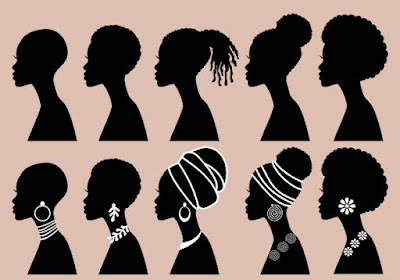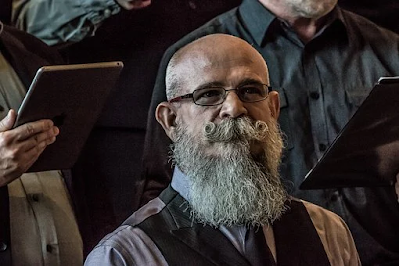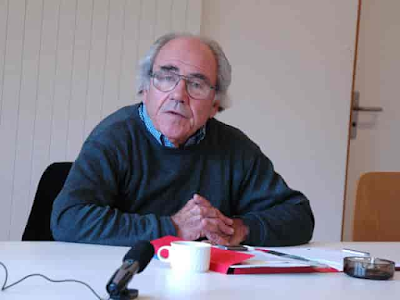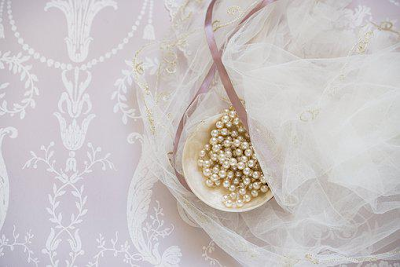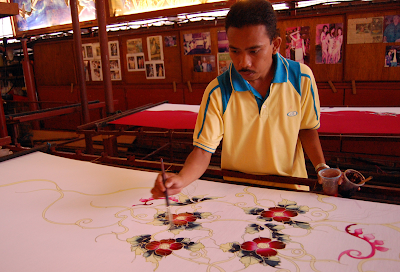Featured
- Get link
- X
- Other Apps
ORIGINS, HISTORY, AND EVOLUTION OF AFRO HAIRSTYLES.
A tiny group of young black female dancers and jazz singers defied prevailing black community conventions by wearing their hair unstraightened around the end of the 1950s.
The hairdo they wore had no name and was referred to as "close-cropped" by the black press when it was spotted.
These dancers and musicians were sympathetic to or participating in the civil rights struggle, and they believed that their racial pride was represented via their unstraightened hair.
Similar motivated female student civil rights activists at Howard University and other historically black universities stopped straightening their hair, got it chopped short, and were mocked by their peers about 1960.
The close-cropped style evolved into a huge spherical shape that was worn by both sexes and was produced by pulling longer unstraightened hair outward with an Afro pick, a wide-toothed comb.
The Afro symbolized the black is beautiful movement at its peak popularity in the late 1960s and early 1970s.
The style was a celebration of black beauty and a rejection of Eurocentric beauty norms throughout those years.
It also fostered a feeling of belonging among its wearers, who considered the design as a sign of someone eager to take a position against racial injustice.
As the Afro grew in popularity, its ties to black political groups eroded, and its ability to express its users' political convictions dwindled.
Afro Hair Styles Norms That Existed Before.
Black women were required to straighten their hair in the 1950s.
Unstraightened black female hairstyles represented a major break with black community standards.
Black ladies straightened their hair using a hot metal comb after covering it with protective pomade.
The tight curls of African American hair were converted into totally straight hair with a pomaded gloss using this method.
Hair that had been straightened stayed straight until it came into touch with water.
Black ladies went to great lengths to extend the time between touch-ups.
They wore a hat to protect their hair from the rain, didn't go swimming, and only washed their hair just before straightening it again.
A scarf was used to conceal a woman's hair if she couldn't straighten it.
Hair straightening technology aided prevailing gender stereotypes that saw long wavy hair as attractively feminine.
Hair straightening did not extend hair and may have caused breakage, but it did change tightly curled hair into straight hair that could be styled into waves.
Straight hair was lauded as "excellent hair," whereas tightly curled hair was derided as "nappy" or "poor hair."
Many people have characterized hair straightening as a black endeavor to resemble whites because of the Eurocentric roots of these black community assessments.
Hair straightening, opponents replied, indicated far more than a whites-only copy.
Black ladies emulated other black women who straightened their hair to seem urban, sophisticated, and well-groomed.
Most black males had short, unstraightened hair in the post–World War II era, whereas the great majority of black women straightened their hair.
Because it was preferred by many black artists, the male straightened hairdo known as the conk was widely visible.
The conk, on the other hand, was a rebellious style popular with performers and males involved in criminal subcultures.
Traditional black males and middle-class men shaved their heads and did not straighten their hair.
Origins Of Afro Hair Styles.
The knowledge of newly independent African countries, as well as the wins and defeats of the civil rights struggle, generated sentiments of optimism and wrath, as well as exploration of identity, among young African Americans in the late 1950s and early 1960s.
In such political and emotional context, the Afro was born.
The style expressed defiance of racial beauty rules, rejection of middle-class customs, and pride in black beauty, and it harmonized with a larger generational rejection of artificial.
The Afro's unstraightened hair was a method to emphasize the race's cultural and physical originality while also rejecting behaviors associated with white emulation.
Dancers, jazz and folk performers, and university students may have had more leeway to experiment with unconventional fashions than regular working women, and were among the first to do so.
In the late 1950s, a group of black contemporary dancers chose to wear short, unstraightened hair instead of constantly touching up straightened hair that had become kinky due to sweat.
Ruth Beckford, who shared the stage with Katherine Dunham, remembers the perplexed looks she got when she wore a short, unstraightened hairdo.
Strangers gave her hair-growing remedies, while a young student inquired whether the shapely Miss Beckford was a male.
A few young black women embraced natural haircuts about 1960 in politically engaged settings on the campuses of historically black universities and in civil rights movement organizations.
Abbey Lincoln, Melba Liston, Miriam Makeba, Nina Simone, and folk singer Odetta all performed with short, unstraightened hair as early as 1961.
Though these ladies are most recognized for their performances, their political activism was an important part of their work.
They performed at civil rights movement demonstrations and fund-raisers, singing songs advocating for racial justice.
Abbey Lincoln travelled with Grandassa in 1962 and 1963, a group of models and performers whose fashion shows stressed the relationship between black pride and what was becoming known as the "au naturel," "au naturel," or "natural" style.
When the mainstream black press saw unstraightened hair, they often assumed that those who wore it "au naturel" had sacrificed their sex appeal for their beliefs.
They didn't think unstraightened hair was attractive at the time.
Early Reactions To Afro HairStyles.
The first women who wore unstraightened styles faced astonished looks, mockery, and insults for wearing styles that were viewed as horrible rejections of community norms, despite the fact that they had backing from other activists.
Many of these ladies clashed with their elders, who saw hair straightening as a necessary part of proper grooming.
Ironically, a few black female students isolated in mostly white colleges were accepted by white radicals unfamiliar with black community customs.
The style, on the other hand, was seen as startlingly unorthodox by more mainstream whites, and several businesses prohibited Afros from the workplace.
Natural hair became a recognized look and a frequent issue of dispute in the black press as more women abandoned hair straightening.
As the technique became associated with racial humiliation, an increasing number of women stopped straightening their hair.
"We have to stop being embarrassed of being black," said black leader Stokely Carmichael during a 1966 protest, fusing flair, politics, and self-love.
We have a large nose, a thick lip, and nappy hair, and we're going to call it beautiful regardless of how people feel about it.
We are no longer going to fry our hair" (Bracey, Meier, and Rudwick 1970, p. 472).
The term "black is beautiful" was everywhere, and it summed up a new aesthetic hierarchy that valued dark brown complexion and unstraightened hair.
The haircut was adopted by an increasing number of activists, and their photographs were widely circulated by the media.
By 1966, the Afro had become inextricably linked to political action.
Women who wore their hair unstraightened felt as though it associated them with the burgeoning black power movement.
Members of the Black Panther Party wearing black leather jackets, black berets, sunglasses, and Afros were portrayed on television as the essence of black radicalism.
Many men and women started to develop Afros that were longer and thicker.
Only hair cut in a huge round form was eventually referred to be an Afro, while other unstraightened haircuts were referred to as naturals.
Popularization Of Afro Hair Styles.
Workplace and intergenerational disputes decreased as more black men and women wore the Afro.
In 1968, print advertising for Kent cigarettes and Pepsi-cola featured ladies with enormous Afros.
Popular fashion products included decorative Afro picks with black power fist-shaped handles or African themes.
Manufacturers of black hair-care products devised new items for Afro care while continuing to promote existing products for straightening hair.
For styling huge Afros, the electric "blow-out comb" combines a blow-dryer with an Afro pick.
Afro wigs were introduced by wig makers.
Despite the Afro's beginnings in the United States, Johnson Products, a longstanding hair straightening product producer, advertised its new line of Afro Sheen products using the Swahili terms for "beautiful people" in radio and print advertising that declared, "Wantu Wazuri apply Afro Sheen." Clarence Williams III, star of the iconic television series The Mod Squad, had a huge Afro as part of his style in 1968.
Patrick Lichfield's photograph of Marsha Hunt, who stood naked save for arm and ankle cuffs and her large round Afro, was featured in British Vogue in 1969.
This well publicized photograph was part of a growing trend in the fashion industry that used black models as symbols of the primal, wildness, or exotica.
Angela Davis, an activist and academic, was one of the first to sport a huge Afro, following in the footsteps of other politically prominent black women.
Her photograph was widely publicized when she was put on the FBI's most wanted list in 1970.
She became a heroine for many black women throughout her years as a fugitive and prisoner, as a nationwide effort sought to secure her release.
Angela Davis's enormous Afro became inextricably linked to her, and the "Angela Davis look" became widely popular.
Ironically, her image's popularity led to the Afro's metamorphosis from a practice that expressed the political convictions of committed activists to a style that could be worn by the simply fashion-conscious.
Black women invented the style that became known as the Afro.
Since most black males kept their hair short and unstraightened in the late 1950s, short unstraightened hair for black women could only be considered exceptional.
When the design grew into a huge round form in the mid-1960s, it became a vogue for both men and women.
Because unstraightened hair was the norm for African males, an Afro was only an Afro when it was big.
Commercial advertising and politically charged art work usually reasserted gender divisions that had been challenged by the first women who ventured to wear short unstraightened hair during the late 1960s and early 1970s, when men and women wore Afros.
Countless photos from the time portrayed a black guy with a massive Afro standing behind a black lady with an even larger Afro.
The woman's shoulders were often exposed, and she wore enormous earrings.
Popularity of Afro Hair Styles Declines, but Socio-Cultural Importance Remains
H. Rap Brown, a black rebel, complained in the late 1960s that too many blacks had "processed brains" behind their natural haircuts.
By the end of the decade, many blacks agreed with his assessment that the style revealed nothing about a wearer's political beliefs.
Fashion separated the Afro from its political roots as it absorbed the once frightening aesthetic.
Hair straightening was reasserted as the crucial first step in black women's hair care by the hair-care business, which attempted to present the Afro as one choice among several.
For black women in the 1970s, a style known as the Curly Afro became popular, which involved straightening and then curling hair.
When he donned long wavy hair as the lead of the film Superfly in 1972, Ron O'Neal recreated pre-1960s subcultural ideas of black manhood.
Large Afros were fashionable throughout the 1970s, but their appearance in blaxploitation films created fresh connotations with Hollywood's parodic portrayals of black subcultures.
Despite the fact that the huge round Afro is so closely identified with the 1970s that it is most usually recreated in comedic retro situations, the Afro has long-term implications.
It has a long-term effect on popular perceptions of beauty.
Erykah Badu, a black singer, wore a huge Afro wig onstage at Harlem's Apollo Theater in 2003.
She took off the wig after a few songs, revealing her short, unstraightened hair.
Reporters characterized her hair in the same way as those who sought to explain the styles worn by singers Nina Simone, Abbey Lincoln, and Odetta in the early 1960s did.
It was dubbed "close-cropped." Women concealed their unstraightened hair with scarves before the Afro black movement became fashionable.
The public became used to considering the texture of unstraightened hair as attractive as a result of the Afro, paving the door for a profusion of unstraightened African American styles.
Find Jai on Twitter | LinkedIn | Instagram
See also:
African American Dress; Afrocentric Fashion; Barbers; Hair Accessories; Hairdressers; Hairstyles.
References And Further Reading:
Bracey, John H., Jr., August Meier, and Elliott Rudwick, eds. Black Nationalism in America. New York: Bobbs-Merrill Company, 1970.
Craig, Maxine Leeds. Ain’t I a Beauty Queen: Black Women, Beauty, and the Politics of Race, New York: Oxford University Press, 2002. Includes a detailed history of the emergence of the Afro.
Davis, Angela Y. “Afro Images: Politics, Fashion, and Nostalgia.” Critical Inquiry 21 (Autumn 1994): 37–45. Davis reflects on the use of photographs of her Afro in fashion images devoid of political content.
Kelley, Robin D. G. “Nap Time: Historicizing the Afro.” Fashion Theory 1, no. 4 (1997): 339–351. Kelley traces the black bohemian origins of the Afro and its transformation from a feminine to masculine style.
Mercer, Kobena. “Black Hair/Style Politics.” In Out There: Marginalization and Contemporary Cultures, edited by Russell Ferguson, Martha Gever, Trinh T. Minh-ha, and Cornel West, 247–264. Cambridge, Mass.: MIT Press, 1990. Mercer places the Afro in the context of earlier black hair care practices and challenges the widely held view that hair straightening represented black self-hatred.
- Get link
- X
- Other Apps

